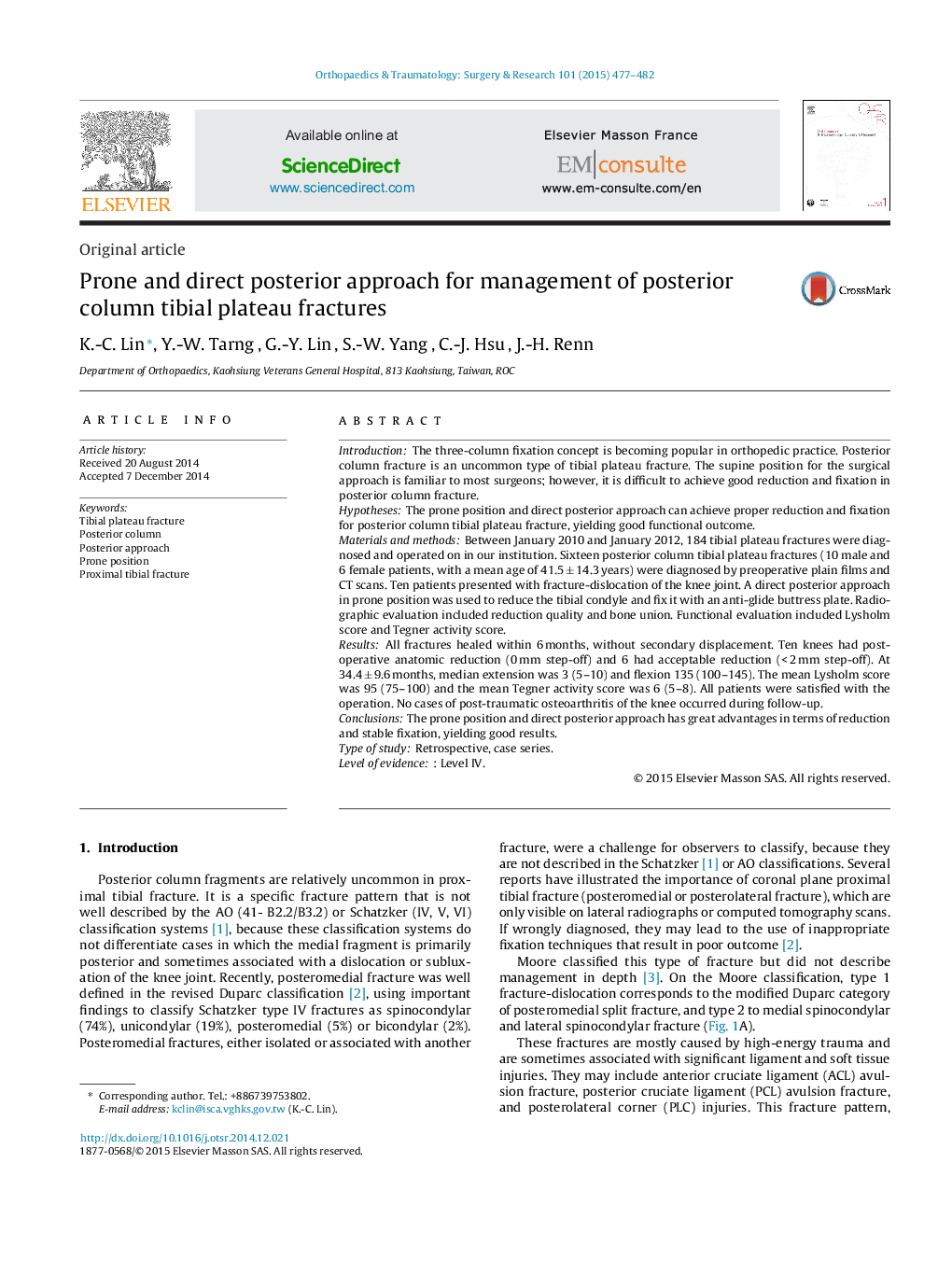| کد مقاله | کد نشریه | سال انتشار | مقاله انگلیسی | نسخه تمام متن |
|---|---|---|---|---|
| 4081080 | 1267578 | 2015 | 6 صفحه PDF | دانلود رایگان |
IntroductionThe three-column fixation concept is becoming popular in orthopedic practice. Posterior column fracture is an uncommon type of tibial plateau fracture. The supine position for the surgical approach is familiar to most surgeons; however, it is difficult to achieve good reduction and fixation in posterior column fracture.HypothesesThe prone position and direct posterior approach can achieve proper reduction and fixation for posterior column tibial plateau fracture, yielding good functional outcome.Materials and methodsBetween January 2010 and January 2012, 184 tibial plateau fractures were diagnosed and operated on in our institution. Sixteen posterior column tibial plateau fractures (10 male and 6 female patients, with a mean age of 41.5 ± 14.3 years) were diagnosed by preoperative plain films and CT scans. Ten patients presented with fracture-dislocation of the knee joint. A direct posterior approach in prone position was used to reduce the tibial condyle and fix it with an anti-glide buttress plate. Radiographic evaluation included reduction quality and bone union. Functional evaluation included Lysholm score and Tegner activity score.ResultsAll fractures healed within 6 months, without secondary displacement. Ten knees had postoperative anatomic reduction (0 mm step-off) and 6 had acceptable reduction (< 2 mm step-off). At 34.4 ± 9.6 months, median extension was 3 (5–10) and flexion 135 (100–145). The mean Lysholm score was 95 (75–100) and the mean Tegner activity score was 6 (5–8). All patients were satisfied with the operation. No cases of post-traumatic osteoarthritis of the knee occurred during follow-up.ConclusionsThe prone position and direct posterior approach has great advantages in terms of reduction and stable fixation, yielding good results.Type of studyRetrospective, case series.Level of evidence: Level IV.
Journal: Orthopaedics & Traumatology: Surgery & Research - Volume 101, Issue 4, June 2015, Pages 477–482
